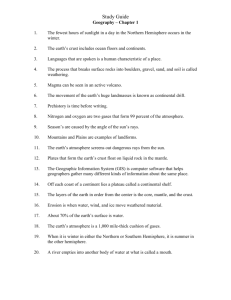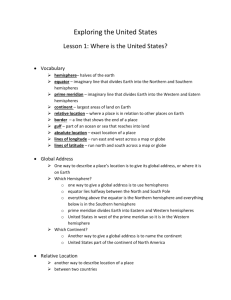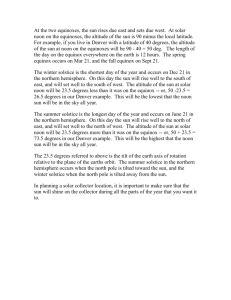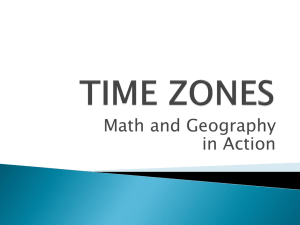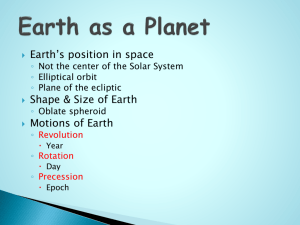Vocabulary Chapter 4 Read the vocabulary word and definition and
advertisement
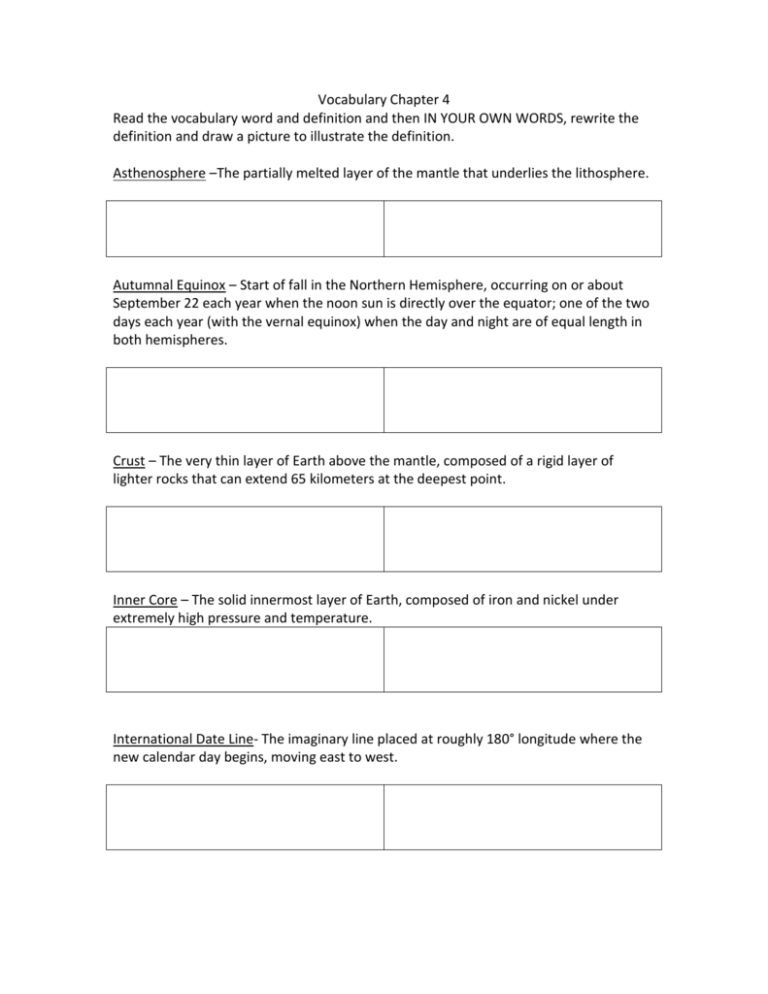
Vocabulary Chapter 4 Read the vocabulary word and definition and then IN YOUR OWN WORDS, rewrite the definition and draw a picture to illustrate the definition. Asthenosphere –The partially melted layer of the mantle that underlies the lithosphere. Autumnal Equinox – Start of fall in the Northern Hemisphere, occurring on or about September 22 each year when the noon sun is directly over the equator; one of the two days each year (with the vernal equinox) when the day and night are of equal length in both hemispheres. Crust – The very thin layer of Earth above the mantle, composed of a rigid layer of lighter rocks that can extend 65 kilometers at the deepest point. Inner Core – The solid innermost layer of Earth, composed of iron and nickel under extremely high pressure and temperature. International Date Line- The imaginary line placed at roughly 180° longitude where the new calendar day begins, moving east to west. Lithosphere – the outer shell of the Earth consisting of the crust and uppermost portion of the mantle. Magnetic field – An area in which the motion of charged particles creates a magnetic force, such as the field of magnetic force generated by the movement of fluid in Earth’s outer core. Mantle- The thickest of Earth’s layers, located between the outer core and Earth’s crust, composed mostly of compounds rich in iron, silicon, and magnesium. Outer core – The layer of Earth’s interior located between the inner core and mantle, composed of iron and nickel in a liquid state. Parallax – The apparent shift in one object’s position relative to another caused by a change in the location of the observer. Prime meridian – The imaginary line dividing Earth’ surface into Eastern and Western Hemispheres, established as 0° at Greenwhich, England; the starting point for standard time zones. Revolution – The movement of one body around another, such as the Earth in orbit around the sun. Rotation- The turning of a body, such as Earth, on its axis. Standard time zones – Areas roughly defined by twenty-four 15° sections of longitude, each centered on a time meridian that establishes the hour of the day. Summer Solstice- The first day of summer in the Northern Hemisphere, which occurs on or about June 21 each year when the noon sun appears to reach its northern point in the sky (associate this with the Tropic of Cancer – 23.5°N latitude) Time meridian – A line of longitude exactly divisible 15° on which each standard time zone is roughly centered. Vernal Equinox- Start of spring in the Northern Hemisphere, occurring on or about March 21 each year when the noon sun is directly over the equator; one of two days each year (with the autumnal equinox) when day and night are of equal length in both hemispheres. Winter Solstice- The first day of winter in the Northern Hemisphere, which occurs on or about December 21 each year when the noon sun appears to reach its most southern point in the sky (associate this with the Tropic of Capricorn – 23.5°S latitude)
